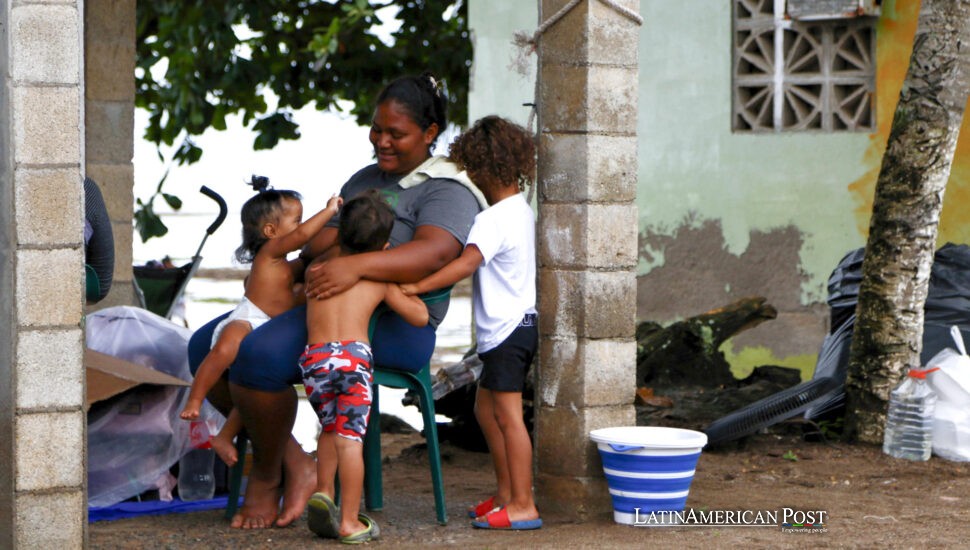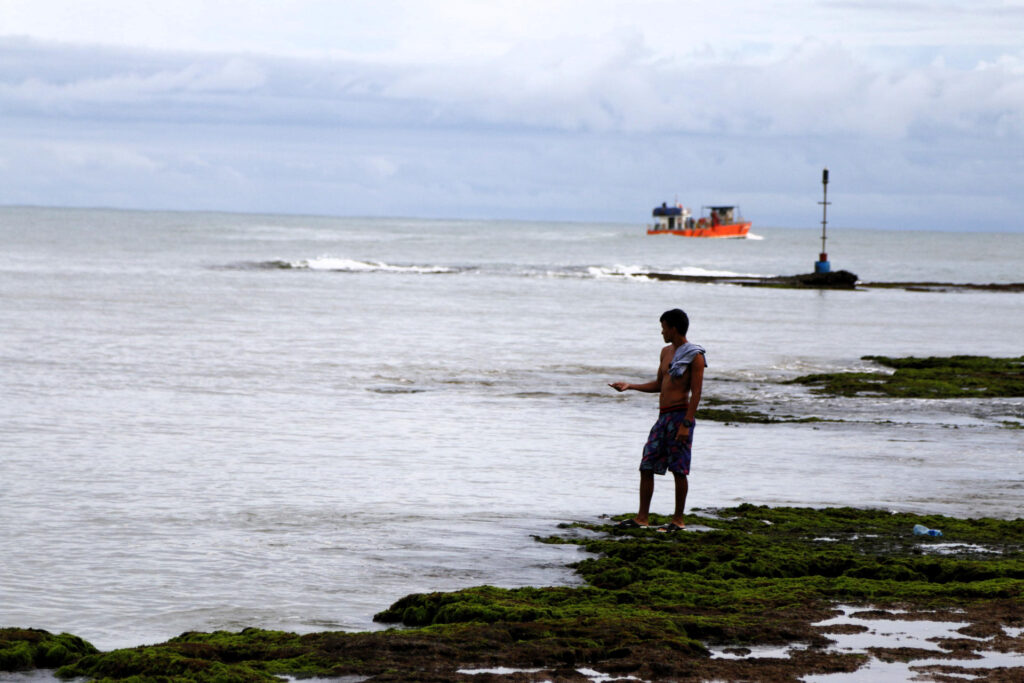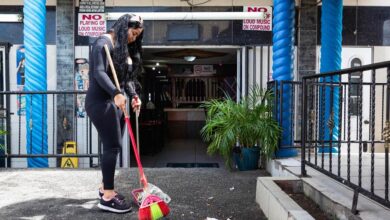Panama Beach Stalls Migrants Making U-Turn to South America

Four years after caravans surged north through the Darién Gap, Panama is now seeing the same trail run in reverse. On the beach at Miramar, Venezuelan families wait for boats home, finding that going back can be harder than fleeing in the first place.
When the Road Turns South
Every afternoon, the tide brings more than seaweed to Miramar, a palm-lined fishing village about 40 miles from Colón. It brings backpacks—sun-bleached, waterlogged, slashed open—and the migrants who once carried them.
Marielbis Eloina Campos sits in the sand, clutching her baby while her other three children kick at the surf. “The sea and the money stop us here,” she told EFE, describing a week of sleeping under a plastic tarp.
Campos left Brazil in 2023. She crossed the Darién jungle alone and spent 14 months in a Mexico City shelter waiting for a U.S. asylum appointment through the CBP-One app. Then came the 2024 election. After Donald Trump’s victory, new restrictions kicked in—her slot disappeared. Afraid of the violence migrants now face north of the Río Grande, she chose to turn around.
However, the path south is no easier. A boat ride to La Miel, a Colombian cove across the Caribbean, now costs $260—triple what most families have left. The ocean, once symbolic of escape, has become a wall.
Migration researchers at the Latin American Faculty of Social Sciences say reverse flows like this usually follow abrupt U.S. policy shifts. It occurred after asylum denials in 1996 and again after the implementation of the 2018 “Remain in Mexico” protocol. In Panama, the reversal is sharp: over 12,000 southbound migrants have arrived since November 2024, with 94% of them being Venezuelan.
Sociologist Abril González, from the University of Panama, says smugglers now guide people toward unofficial beaches, such as Miramar, to avoid exit visa checks at formal ports.
Humanitarian Boats and Vanishing Aid
In June, Panama’s navy took 109 migrants—nine different nationalities—south on a military patrol ship. President José Raúl Mulino called it a “one-time humanitarian gesture.” But demand is rising.
Jesús Alfredo Aristigueta, 32, has been sleeping on Miramar’s pier for five nights, waiting for a whisper about the next navy boat. His northbound attempt ended in Chiapas, where cartel gunmen locked him in a shack with 20 others. “Like sardines,” he said. He escaped by scrubbing floors until someone left the door unlocked.
Aid posts that once pushed migrants toward the U.S. border are now shuttered. A 2024 Migration Policy Institute study found that funding for shelters fell by more than 50% after the U.S. election as NGOs revised their mandates.
President Mulino says Panama is covering the costs of migrant medical screenings. However, the International Organization for Migration (IOM) counters that naval transport saves lives, keeping desperate travelers out of dangerous currents.
Physicians say most returnees, especially children like Campos, are already battling malaria and malnutrition in the jungle. Waiting too long for a boat makes everything worse.

The Jungle in Reverse and the Price of Failure
For decades, the Darién Gap was a funnel pointed north. Now, researchers like Robert Baird at the University of Arkansas are charting something new: a loop. Migrants who failed to enter the U.S. are now re-entering the jungle from the opposite direction—often at twice the price.
Fees have flipped. Where smugglers once charged $200 to guide Venezuelans north, the same passage south now costs $500. In Miramar’s makeshift market, people sell whatever they have—phones, jackets, even their kids’ shoes—to scrape together the fare.
Fisherman Orlando Murillo says the economy is a double-edged sword. “People arriving have nothing. People living here have little. A fight over a boat seat could get ugly.”
The toll isn’t just financial. Academic research on “circular migration trauma” finds that repeated displacement magnifies psychological stress. Campos’s seven-year-old freezes when strangers approach. Psychologists link such silence to kidnapping trauma at border crossings.
Still, Campos is resolute. “My sister’s waiting in Brazil,” she said, wiping sweat from her toddler’s brow. “I have to reach her. No matter how many boats it takes.”
A Country Caught in the Middle
Panama’s new government faces a brutal dilemma.
Humanitarian corridors help prevent chaos—but voters want to know why taxpayer-funded diesel is being used to fuel boats for foreign passengers. President Mulino told reporters he’ll push Colombia to crack down on illegal boat launches. Colombian officials fired back: if U.S. policy changes caused this surge, Washington should foot the bill.
Gabriela Alvarado, a professor of international relations, says the only long-term fix is tri-national coordination—origin, transit, and destination countries working together. Otherwise, she warns, “migrants will pay bigger bribes, take more dangerous routes,” just as Central Americans did after Mexico’s security crackdown in 2019.
Back in Miramar, night falls over a patchwork of tarps stretched between coconut trees. A navy officer walks the beach, clipboard in hand, calling out names. There may be room on tomorrow’s boat.
Aristigueta leans forward. Campos lets out a breath.
If luck holds, they’ll board at sunrise. They’ll cross turquoise water and step onto another narrow trail, this one winding through mangroves and military checkpoints. One border behind. Three or four more ahead.
Also Read: Inside Haiti’s Last Trauma Ward, Holding the Line as a Nation Unravels
And in the hush between waves, a hard truth hangs in the salty air: migration doesn’t end at the water’s edge. It just waits—for the next policy shift, the next paycheck, the next tide.





